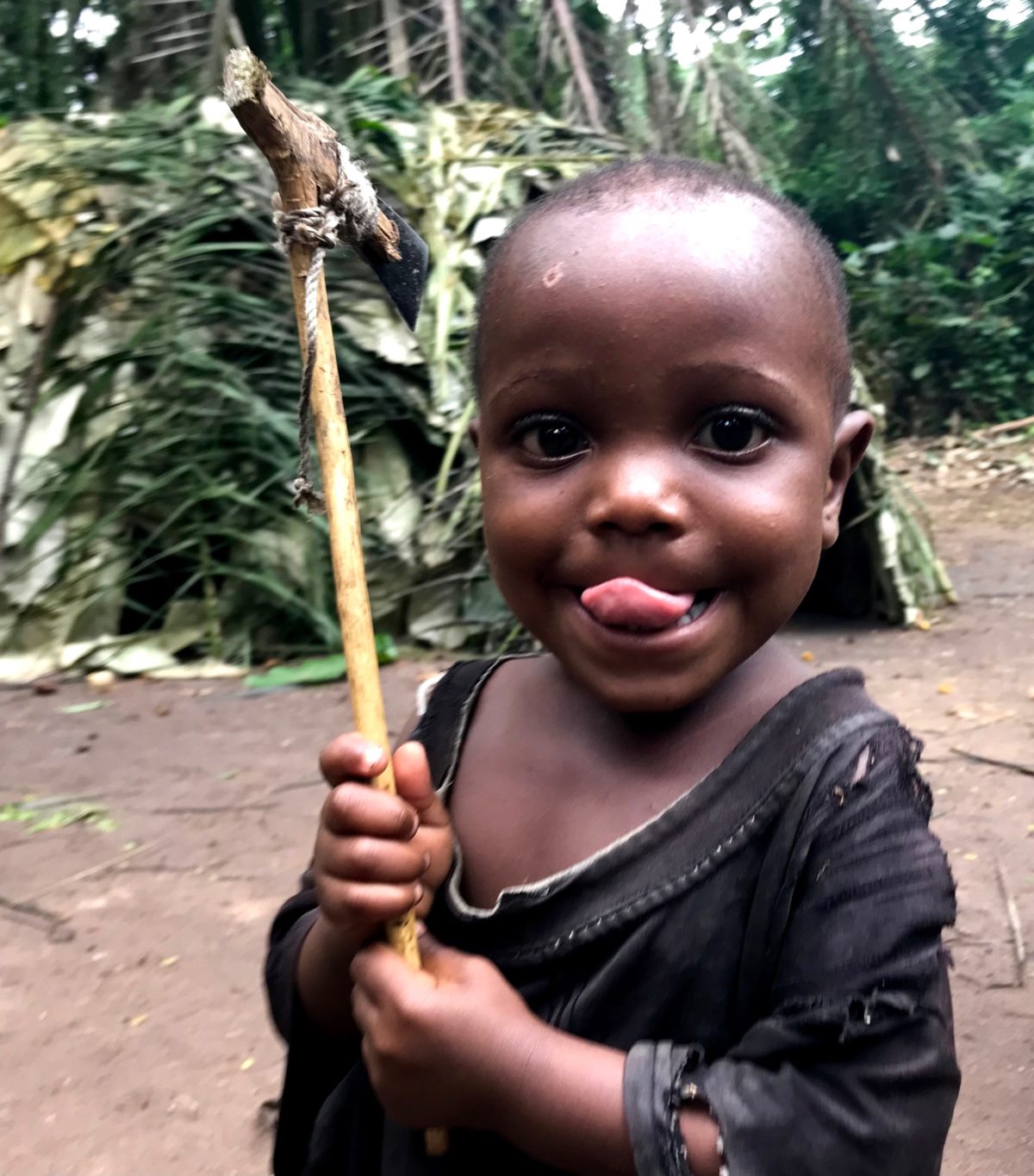The phenomenon of children learning mainly from each other – a typical practice in many hunter-gatherer communities – may provide important lessons about how to prepare children in post-industrial societies for rapid change and uncertain futures.
We have found that when children learn from other children in two sub-Saharan African forager societies, it fosters independence and collaborative problem solving. Such learning systems help children to be flexible in their behaviour. That’s a crucial skill for adapting quickly to changing seasons and environments—while also promoting cooperation, such as the sharing of knowledge and resources.
These findings are based on observational research of children learning among the Hadza people of Tanzania and the BaYaka people of Congo. Both societies still rely on hunting and wild fruits, vegetables, and tubers for a majority of their subsistence. The Hadza and BaYaka are also highly egalitarian, share food widely, and live in tightly knit camps. These cultural and subsistence features lead to very different childhoods for hunter-gatherer children when compared to children in the post-industrialized West.
Children learning together through play and work
A striking feature of childhood in hunter-gatherer societies is how much time boys and girls spend together in multi-aged peer groups away from adults. Even when adults are close by, they rarely guide children’s activities. Instead, children learn through child-to-child teaching and by imitating adult activities in their play. In doing so, children can find new, creative ways to perform adult culture.
“A striking feature of childhood in hunter-gatherer societies is how much time boys and girls spend together in multi-aged peer groups away from adults.”
For example, children regularly make small camps beside adult camps. They cut leaves and vines, bending them to make little huts. The boys will frequently go hunting, sometimes bringing back butterflies that they hand over to the girls, who then pretend to cook them over the fire. This play-food is then shared, following the same conventions as adults’ meat sharing. In the process, children develop cooking skills while also learning about cultural norms surrounding food sharing.
Children’s play will often seamlessly transition into foraging work. Hadza children are active foragers, often using small bows and digging sticks, made for them by parents or older siblings, to collect food close to the camp. BaYaka children also participate in food collecting, with some young adolescent boys maintaining their own trap lines.
Children learning from children
Away from the eyes of their busy parents, children regularly engage in child-to-child teaching. When children are cutting down a tree, another child might say, “No, hold the knife like this”. Or they might say: “Let me show you.” Perhaps, they grab a vine and discuss whether it’s the right kind to use for shimmying up a tree. “Should we cut footholds in the tree like dad?” asks one.

BaYaka parents sometimes make small versions of tools, including axes, in order to encourage children’s participation in subsistence activities. Photo by Sarah M. Pope.
Children also delegate tasks to one another. It can be as small a task as asking another child to bring a plate of food across the camp, or as big as sending children to collect cassava leaves or to go hunting with their father. Children will invite each other to participate in tasks: “Let’s go and collect tubers,” they might say, or “Let’s fetch water”. There might be commands like: “Add water to the cooking pot.” In all of these activities, children are teaching each other through questions, instructions and demonstration.
Parents value children learning autonomously
Another striking feature of childhood in hunter-gatherer societies is that parents value children’s autonomy. For example, BaYaka parents explained to us that they see children as being in charge of their own education: they believe that telling children what to do might prevent children learning other equally meaningful skills. Because BaYaka parents view children as developing autonomously, they frown on pushing children to hit a milestone for which they might not be developmentally ready. Parents also know that when children are acting autonomously, they will often do something helpful, like cooking. They don’t want to get in the way of that.
“As we face an impending environmental crisis, we could learn from how hunter-gatherer child-rearing promotes problem-solving skills.”
Thus, while parents are often aware of their children’s whereabouts, they refrain from interfering in their activities. Parents play important roles in teaching children in later adolescence, particularly hunting and other complex skills.
Lessons from hunter-gatherers for child development
Hunter-gatherers do not rely on stored crops or domestic animals for subsistence. The autonomy afforded to hunter-gatherer children may help develop the behavioural flexibility necessary for living in their unpredictable environments. In turn, collaborative learning may ensure that knowledge and food are shared within the community. As we face an impending environmental crisis, we could learn from how hunter-gatherer child-rearing promotes problem-solving skills.
We need not become hunter-gatherers to foster collaborative problem-solving in the global North. Whether in school or out of school, encouraging children to spend more time in multi-age peer groups, where they can try activities just beyond their skill level without interference from adults, can provide more creative opportunities for learning.
For hunter-gatherers, autonomous work, play, and children learning from each other foster the skills necessary to thrive in shifting environments. By adopting aspects of hunter-gatherer learning systems in the global North, we may well give all children the skills necessary for solving tomorrow’s problems.
Header photo: BaYaka children often emulate adult activities, such as spirit dances, during play. Photo by Sarah M. Pope.
Source: Children - childandfamilyblog.com



